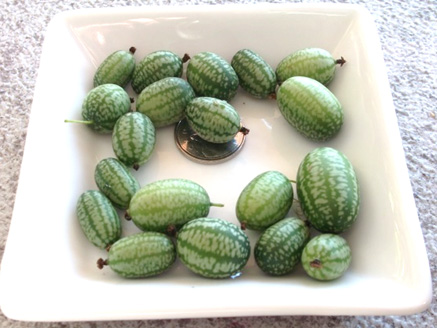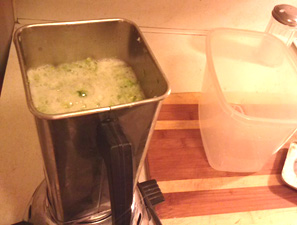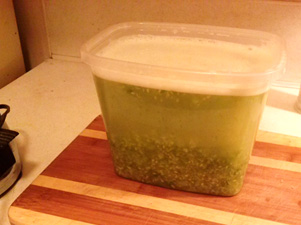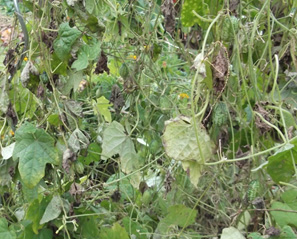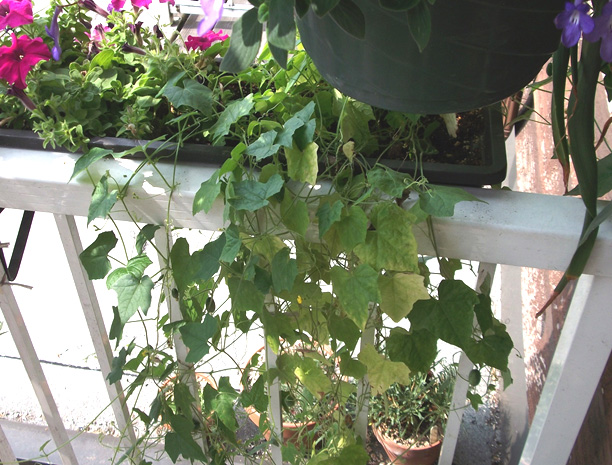words: geoff lewis
There are a lot of baby vegetables out there.
Some of us laughed at baby corn and cherry tomatoes when we were kids. But then there appeared baby-cut carrots, baby onions, baby beets, baby bok choy, baby cabbages and even baby zucchinis, their flowers still attached like they hadn’t finished being born. Maybe some of us felt pangs of guilt from time to time, eating all those babies, their lives just barely starting. Then again, maybe not.
Mouse melons, “cucamelons” and Mexican sour gherkins are different common names for the same species of cucurbit: Melothria scabra. Mouse melons are an obvious addition to the baby vegetable team of tasty toddlers. Each melon is the size of a table grape, but with a watermelon’s distinctive camouflage, and each has the flavour and texture of a cucumber, if cucumbers were tiny and ovoid.
Mouse melons are the cheery cherry tomatoes of the melon and gourd family. Cucumbers this size have more skin to flesh than we are used to, even more than pickling cucumbers, just by being so tiny. A mouse melon is a long-domesticated Mesoamerican scrambler. Thousands of years of cultivation have developed a care-free climber, more or less uniform from seed, but obscure to gardeners and growers. The more famous scarlet runner bean has a similar history and set of habits, though it is adapted to mountains and, therefore, cooler growing conditions. It turns out that mouse melons are pretty easy to grow and harvest in the Lower Mainland and elsewhere, outside or in greenhouses, and from purchased or saved seed.
What I report here is not a science project, which is a shame because the results were so impressive, so unlike typical new seed try-outs. Here are some observations on mouse melons after growing and planting seedlings out over two summers. I watched them scramble around, climb some poles, mingle with and try to strangle others, then dangle and hide their teeny watermelons in a north Surrey garden.
A packet of seeds was part of an order for curiosities, placed online in March. From seeds in the mail, failure is common, but there are always new plants to try. The invoice read “Cucalemon” seed, not “Cucamelon”. Marketing? Dyslexia? I dialed expectations down to low.
Seeds and seedlings
The seeds arrived in the mail and were sown, along with other species, into 128-cell plugs, in April. When seedlings were big enough, they were transplanted to 72-cell plugs. The seedlings were slow to start and quick to tangle, inside under lights, then outside in bright shade. Survivors went out into a garden patch in mid-May, planted as a small camp of well-rooted seedlings about 15 cm apart. They were camped under a teepee of three galvanized heavy wire poles, the poles tied together near the top. The seedlings were slow until the summer warmed up. Then they took off. Tiny yellow melon flowers preceded a surprising number of little mottled melons. They were startling to discover because they hide so well, mouse-like. Then they just suddenly appear. They were tasty, with durable skins. Not as tasty as M&Ms, but okay. A description could be: “Crunchy cucumbers made with a melon baller”, or maybe “Watermelon caviar” assuming watermelons were enormous, terrestrial puffer fish.
Left: The seedlings begin scrambling over the soil and each other
Right: Late summer, the vines have smothered their three-pole teepee.
Where’s Waldo? There is a ripe mouse melon evident in each of the two photos above.
More seeds and more seedlings
I put some mouse melons in a blender with water, to try to separate some seeds the way prospectors pan for gold. After diluting and stirring the shreds and pulp, most of the seeds will sink faster than most of the skins and pulp, which can be poured out the top of a container. Rinse, stir and repeat, and dry the seeds out on a plate.
Left: Extracting melon seeds. Few, if any, seeds are damaged by the blender’s blades.
Right: Floating off the pulp and skins takes lots of water and patience.
After extracting and drying the seeds, I sowed some, again into 128-cell plugs, as a germination test, testing seeds of melons picked in August and, separately, from melons picked in mid-October. The August seeds had low germination, the October seeds much better, near maybe 80 per cent. That the difference in germination was from the difference in time of harvest is only a suspicion.
Mottled green marbles
Unlike squash and cucumbers, mouse melon plants did not suffer from mildew or any other plant disease or pest, and there were other melons and squash around which did. Mouse melons take patience to harvest, since they are both tiny and hide so very well. The skins are sturdy enough that melons in direct contact with the soil for weeks did not decay.
Left: The teepee of mouse melons is above and behind the magenta four o’clock flowers, to the right of the blue garden phlox and in front of the sunflowers. Quite a crowd.
Right: A closer picture of the teepee taken October 30 as the vines were declining, and the melons are revealed. There are nine mouse melons in the photo.
Mouse melons are a fun new vegetable for backyard gardeners and window box farmers. For commercial cultivation, there are some obvious issues to address. The plants need heat, it seems, before they will demonstrate the vigour they are capable of. The fruits were tedious to harvest. I may try growing them up a slanted or shift-trellis (the fruits should then dangle below) and try to sweep or comb the melons from the underside onto a mat below. The fruits would not suffer at all from a short fall. They were very durable. That mouse melons roll like oval marbles means that they can be rolled out of any leaf litter which falls with them, after sweeping at the undersides of such a tilted trellis.
This summer or any summer, to those of you who attempt to produce playpens full of these bouncing baby cucumbers, a Bon Appétit!
Mouse melons on a balcony railing in mid-August. The yellow leaves are from too little fertilizer. There are a lot of little melons though. Can’t you see them all?








